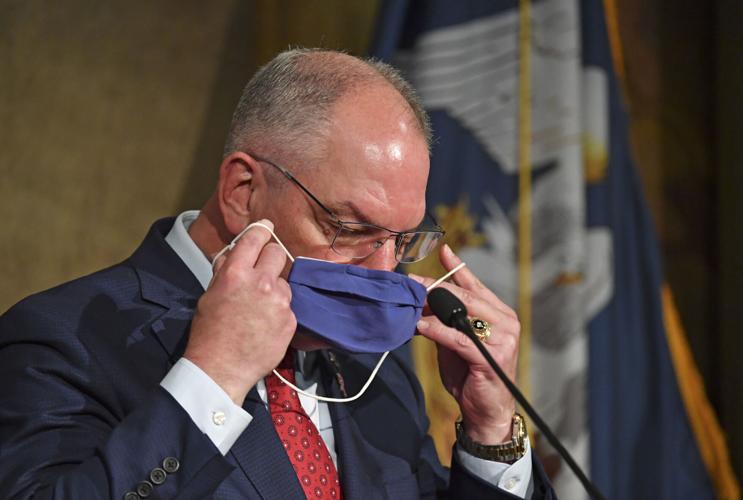I know I haven’t written in a while. I’m sorry.
The United States is undergoing its third COVID-19 wave, with more cases reported each day than ever before. But here in Louisiana things have been mostly staying the same. So far.

COVID-19: Louisiana compared to U.S.: While the rest of the U.S. is seeing a third spike and record case numbers, Louisiana is barely creeping upward.
Before the current wave, Louisiana’s trend had mostly tracked the country's trend. But while cases and deaths have been trending steeply upwards in the U.S. since mid-September, the rise in Louisiana thus far has been muted. Of course, it is important to acknowledge that things could change in an instant.
It isn’t really clear why Louisiana has avoided a third spike, although there are a few hypotheses. Perhaps it is because Louisiana was arguably the only state to have had spikes in both March and July. One could also attribute the relative stability to Louisiana not being competitive in last week’s presidential election. President Donald Trump did not have any major rallies in Louisiana this election season because the state was clearly going to vote for him. (And it did, by a 59% to 40% margin).
This is important because there is early evidence that these rallies, where many participants went maskless, contributed to increases in COVID. A Stanford University study published in late October looked at “the effects of large group meetings on the spread of COVID-19 by studying the impact of 18 Trump campaign rallies.” This study found that these “rallies ultimately resulted in more than 30,000 incremental confirmed cases of COVID-19.”

How Louisiana voted, 2016 vs. 2020: Only two parishes changed to a different color range. East Baton Rouge went more blue and Avoyelles went more red.
This matches findings from the left-leaning Center for American Progress. That group found that “about half of the president’s 22 campaign rallies held between June and September were followed by a county-level increase in COVID-19 cases.”
The evidence that a lack of rallies has been a key factor in keeping COVID at bay in Louisiana is interesting, but not fully convincing. The state’s mask mandate and continued restrictions on gatherings could also be helping in Louisiana, but here again, other states with strong mask mandates, such as Pennsylvania, are seeing unprecedented rises in cases now.
In my last column, I made what I might call the “cautiously pessimistic” forecast for COVID-19 in Louisiana over the next few weeks/months. Bu…
Ultimately, we just don’t know why Louisiana is not seeing a surge in cases. And while it’s a positive trend, it is one that we cannot take for granted going forward.
Louisiana might not be experiencing a statewide surge in COVID cases yet, but that does not mean COVID is not advancing anywhere in the state. Compared to the rest of the state, north Louisiana is experiencing an increase both in new cases and in the percentage of tests coming back positive.
Louisiana Department of Health Regions 7 and 8 in the northern part of the state have gone from averaging 155 new cases per day a month ago to more than 220 today. The the percentage of tests coming back positive has gone from 5.4% to 6.9%. Cases have risen everywhere else as well, but the percentage of tests coming back positive has risen from 3.5% a month ago only to 3.9% now. That suggests the rise in north Louisiana is more serious and undermeasured than elsewhere in the state.
There is growing evidence that Louisiana’s next wave of COVID-19 is at our doorstep, just as the state begins to relax restrictions. Still, th…
The other recent COVID development in Louisiana is a spooky story out of Tulane University. The university averaged 3.7 new cases per day in the two weeks leading up to Halloween - but 31 new cases per day over the first eight days of November, suggesting there an outbreak tied to Halloween. The number of new Tulane cases and percentage of tests coming back positive rose each day from Nov. 2 through Nov. 6.
The potential good news for Tulane is that cases and percent positive fell on Nov. 7 and 8. Tulane has had two previous spikes in COVID, and each time they were short-lived, likely due to the university’s aggressive test and trace program. Hopefully, this spike will also be short-lived, although the result will undoubtedly be an increase in cases reported in New Orleans.
A stable and relatively low coronavirus case count might make writing a COVID data column challenging, but it has been good news for the state over the past few months. Still, almost 6,000 Louisiana lives have been lost to this terrible disease, and while the end is potentially getting close, it is still frustratingly far away.
'We know very little about what the virus will be doing four months from now'











